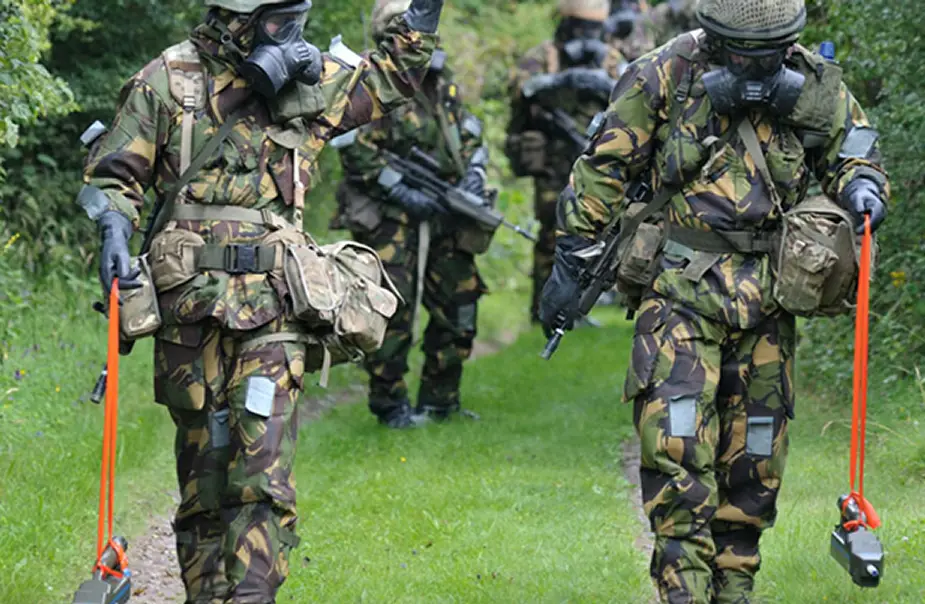On Nov. 12, the European Defence Agency (EDA) has for the first time been chosen to support the development of a PESCO project as an Agency initiative, in line with the PESCO commitment to use EDA as the European forum for project capability development.

The threat of CBRN (chemical, biological, radiological and nuclear) incidents is a very real one. Whether malicious and intentional - such as in the context of warfare or a terrorist attack - or accidental - such as a spill or leakage - the consequences of CBRN incidents can be incredibly destructive (Picture source: Argon Electronics)
The Permanent Structured Cooperation (PESCO) is the part of the European Union's (EU) security and defence policy (CSDP) in which 25 of the 28 national armed forces pursue structural integration. Based on Article 42.6 and Protocol 10 of the Treaty on European Union, introduced by the Treaty of Lisbon in 2009, PESCO was first initiated in 2017.
The Austrian-lead project, CBRN Surveillance as a Service (CBRN SaaS), will provide a rapidly deployable 24/7 chemical, biological, radiological and nuclear (CBRN) surveillance capability. The project aims to maximise the use of unmanned ground systems and aerial drones which will be equipped with a variety of sensors to deliver a real-time CBRN surveillance, detection and incident management capability for both civilian and military purposes.
CBRN SaaS involves four contributing Member States (cMS), Austria (lead), Croatia, Hungary and Slovenia. Following a request from the project lead, on behalf of the cMS, CBRN SaaS will be taken forward as an EDA project. The transfer was formalised today during a signing ceremony in the margins of the EDA Steering Board.
Speaking at the event, Thomas Starlinger, Minister of Defence of Austria said, “CBRN SaaS will be designed for use in the military and civilian domain. For the Austrian Armed Forces it constitutes another means to increase force protection for operations in Austria as well as abroad. National project partners may also benefit since the project will most probably be eligible for funding from the European Defence Industrial Development Programme. Through this, Small and Medium-Sized Enterprises and Research Institutes will profit through a financial return from the EU.”
The high strategic value of assets that provide 24/7 CBRN surveillance is proven by their ability to survey critical infrastructure and borders, augment situational awareness and support not only military commanders but also national disaster management in dealing with CBRN incidents. CBRN SaaS will establish an unmanned sensor network consisting of Unmanned Aerial Systems (UAS) and Unmanned Ground Systems (UGS) that will be interoperable with legacy systems. When combined with communications and data networks it will deliver a Recognised CBRN Picture that enhances knowledge-based decision making by leaders and supports the mission of saving lives. In focusing on the deployment of unmanned systems, operational flexibility will be increased and reduces the risk to the operators.
“EDA is delighted to take this project forward and support our Member States. CBRN SaaS will benefit from EDA’s extensive experience of delivering defence cooperation projects, especially the insights gained from the EDA CBRN Joint Investment Programme. CBRN agents and weapons are a source of great concern, effective surveillance is, therefore, a crucial capability. As endorsed by the EU’s Capability Development Plan, developing enhanced CBRN capabilities based on newly available technologies such as unmanned systems is a priority that will enhance Europe’s resilience and preparedness to deal with CBRN threats.” EDA Chief Executive Jorge Domecq commented.
The CBRN SaaS main deliverable will be an operational plugin module for widely varying civilian missions and CSDP or NATO military operations. As a capability and technology development project, CBRN SaaS aims to provide suitable mobility (e.g. aerial, ground, unmanned) to mount CBRN sensors that will collect and send data to be processed through a secure network to the decision maker.
In addition, the generated Recognised CBRN Picture can be offered as a power by the hour service to others in need of CBRN surveillance.
The project will run until 2022, and will mainly deliver a demonstrator that provides a proof of concept; a Cooperation Roadmap which identifies what future modules could be developed in what format and with whom; a concept of operations and a service availability concept.
Background
CBRN SaaS was approved and initially launched as a PESCO project within the second batch on 19 November 2018. Following a decision of the cMS, EDA was requested to support establishing the CBRN SaaS Cat. B project (developed and launched by a number of cMS with the opportunity for other participating Member States to join later) that will help implement the CBRN SaaS PESCO project.















